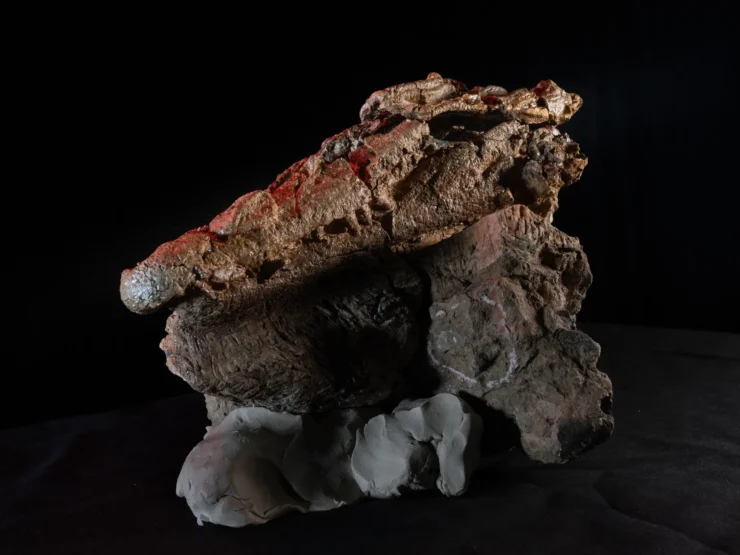In Australia, researchers discovered a new species of crocodile that lived about 95 million years ago and ate a dinosaur as its final meal.
The crocodilian fossils were discovered in 2010 near the Winton Formation in eastern Australia, a rock bed from the Cretaceous period, when most of the known dinosaurs roamed the Earth.
Although some of the crocodile fossils were partially broken, researchers found numerous tiny bones from different animals inside the remains. At the Australian Age of Dinosaurs Museum, scientists have determined that those smaller bones belonged to a dinosaur.
According to USA Today‘s report, Confractosuchus sauroktonos, which means “broken dinosaur killer,” was an 8 foot long freshwater crocodile. However, Matt White, the research associate and lead researcher, believes it would have grown much larger. The researchers had no idea how the crocodile died.
The animal’s tail and limbs were missing, but around 35% of its body was still present, including its nearly complete cranium.The bones contained within the remains were then identified by researchers using X-ray and CT scans.
The remains belonged to a 4-pound juvenile ornithopod, a group of plant-eating dinosaurs that includes duck-billed creatures, according to the researchers. The fact that the ornithopod remains were the first of their kind to be discovered in Australia suggests that the species is a recent one.
One of the ornithopod’s femurs was “sheared in half” within the crocodile’s stomach, and the other with a bite mark so hard a tooth mark was left. Researchers concluded that the Confractosuchus “either directly killed the animal or scavenged it immediately after its death.”
Even though Confractosuchus did not specialize in eating dinosaurs, White asserted that it would not have passed up a simple meal like the young ornithopod remains discovered in its stomach.
Because there are so few confirmed instances of dinosaurs being preyed upon, the findings were “extremely rare,” and the finding is the first proof that crocodiles were eating dinosaurs in Australia. Researchers found the remains of “terror crocodiles” in August 2020. These reptiles had “banana-sized” teeth and could eat large dinosaurs.
“It is likely dinosaurs constituted an important resource in the Cretaceous ecological food web,” Matt White said. “Given the lack of comparable global specimens, this prehistoric crocodile and its last meal will continue to provide clues to the relationships and behaviors of animals that inhabited Australia millions of years ago.”
